In my last blog post from Costa Rica I shared with you stories of fishing for snook from a kayak on a brackish lagoon on the Osa Peninsula. If you have never done it before, then I will tell you right now that snook fishing is a lot of fun!
Snook hit lures very hard, and soon after being hooked they will often leap high into the sky. You can click play below to see what I mean!
As part of this trip to Costa Rica one of my ideas/goals is to eat as much of what we catch as possible. Fortunately for Lauren and I, snook and a lot of the other fish I've been catching are wonderful eating.
We have been enjoying fillets cooked simply in a pan with butter.
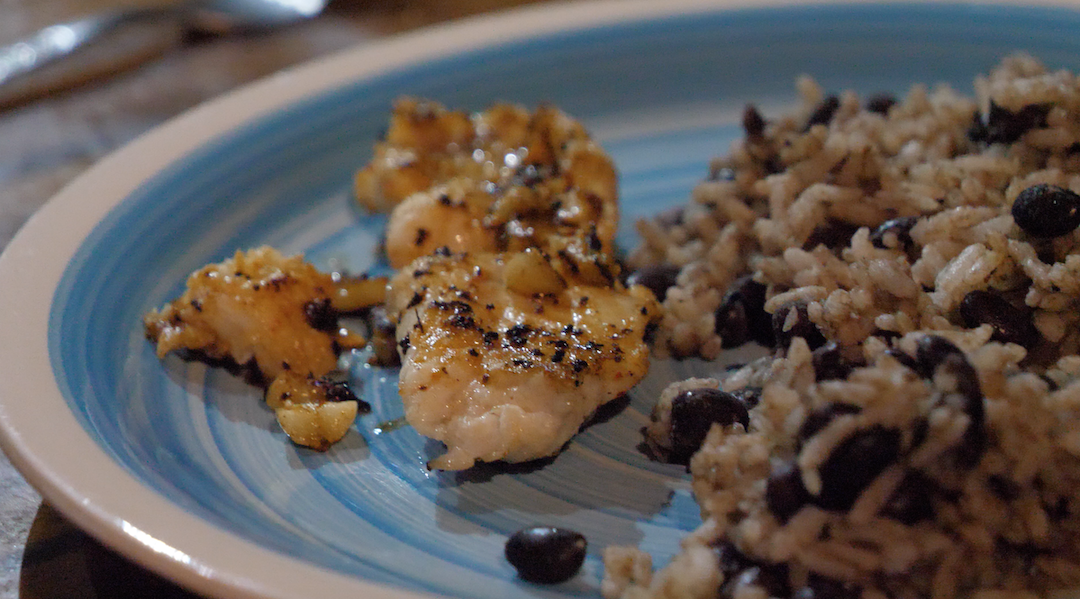
After getting my fill of catching snook from the kayak I decided to branch out and do some exploring and fishing of some new and exciting areas, and in this post I'll share with you some of the highlights.
Read on to learn more!
Corcovado National Park
The most bio-diverse place on Earth is Corcovado National Park, located on the Osa Peninsula here in Costa Rica. There are more plants and animal species here than anywhere else in the world.
There is literally no telling what you might see next!
As I mentioned in my previous blog post we've seen scarlett macaws and three species of monkeys.
However we've also seen countless varieties of insects, birds, and mammals, such as the coati and ant eater.
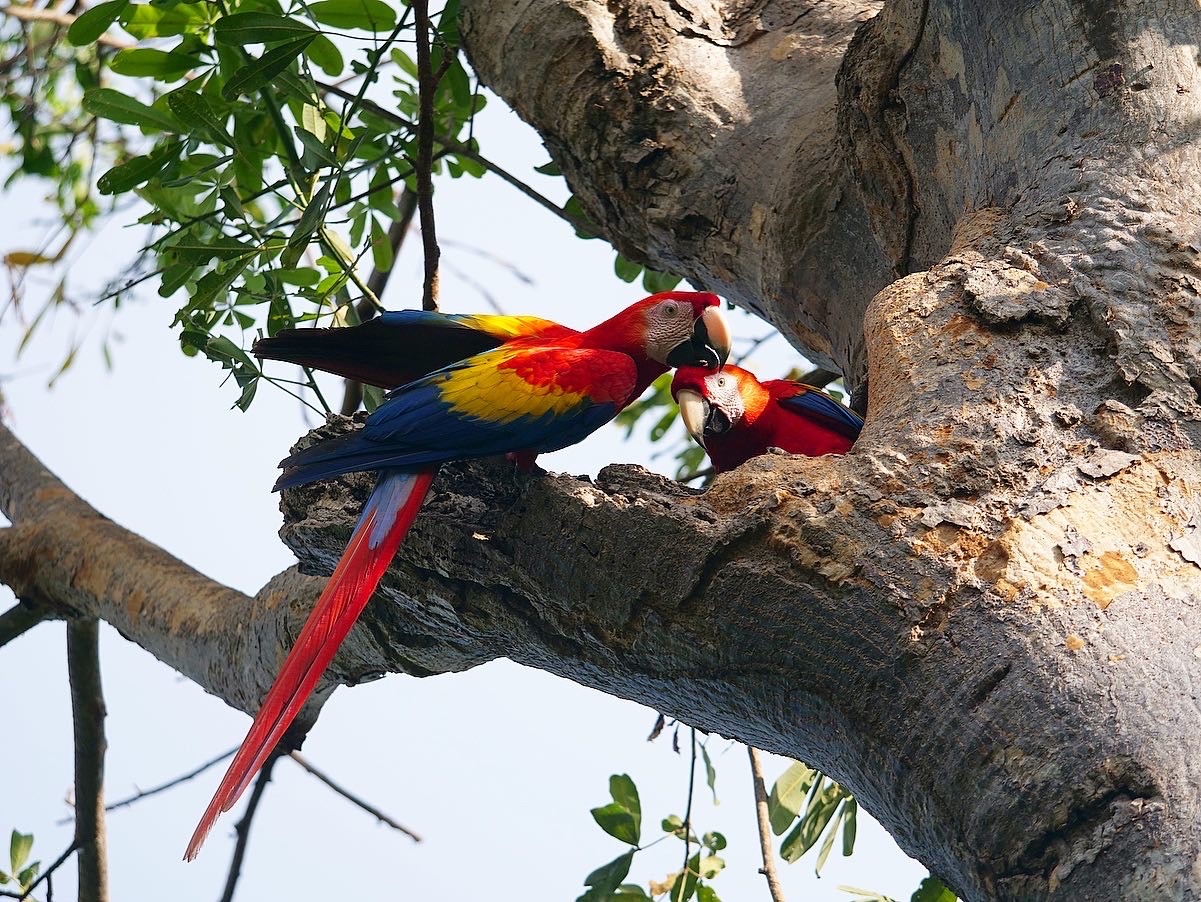
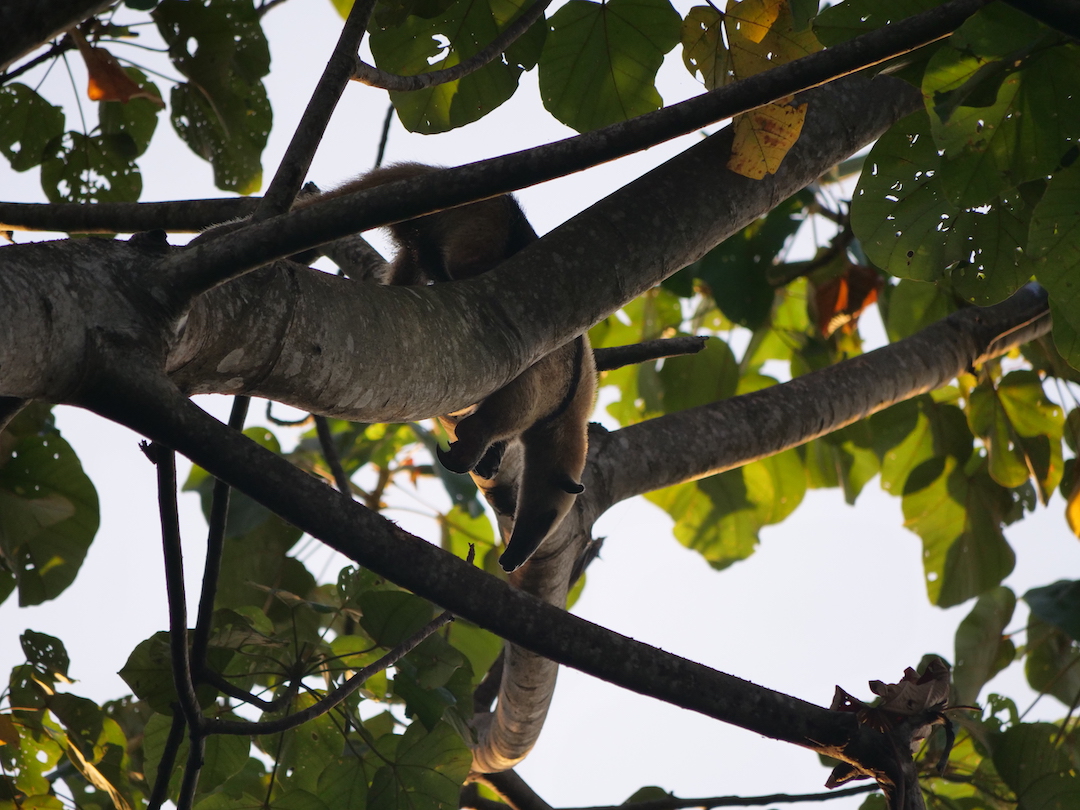
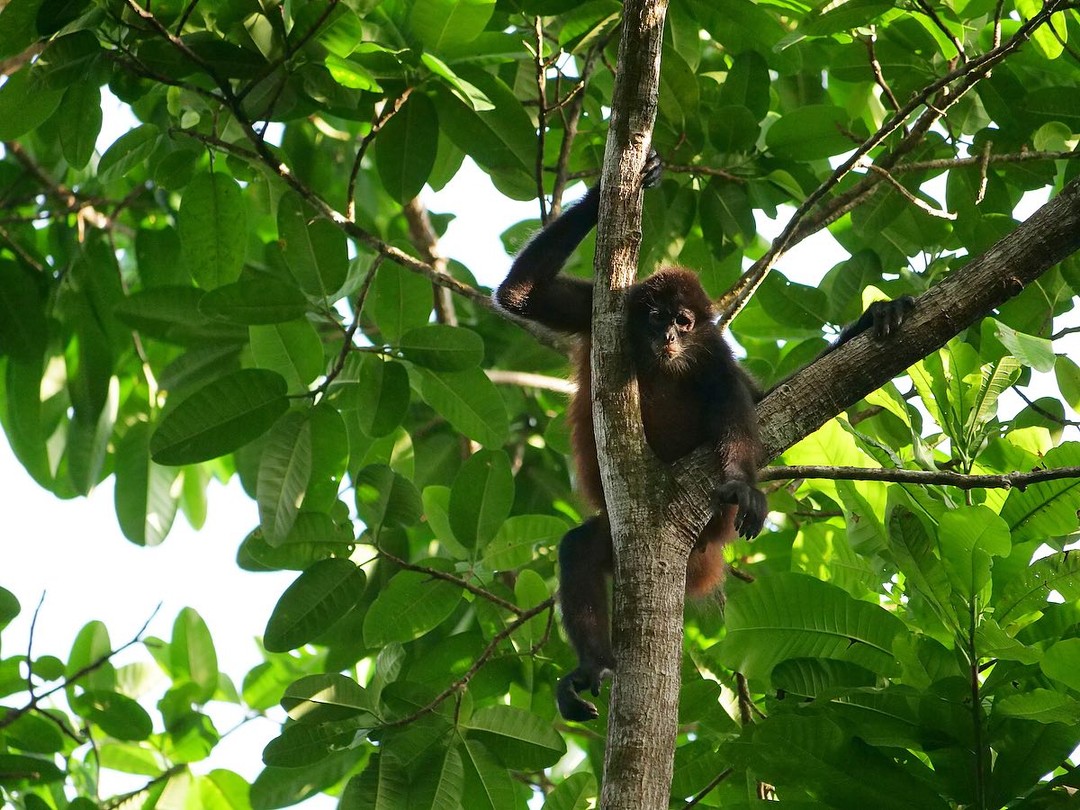
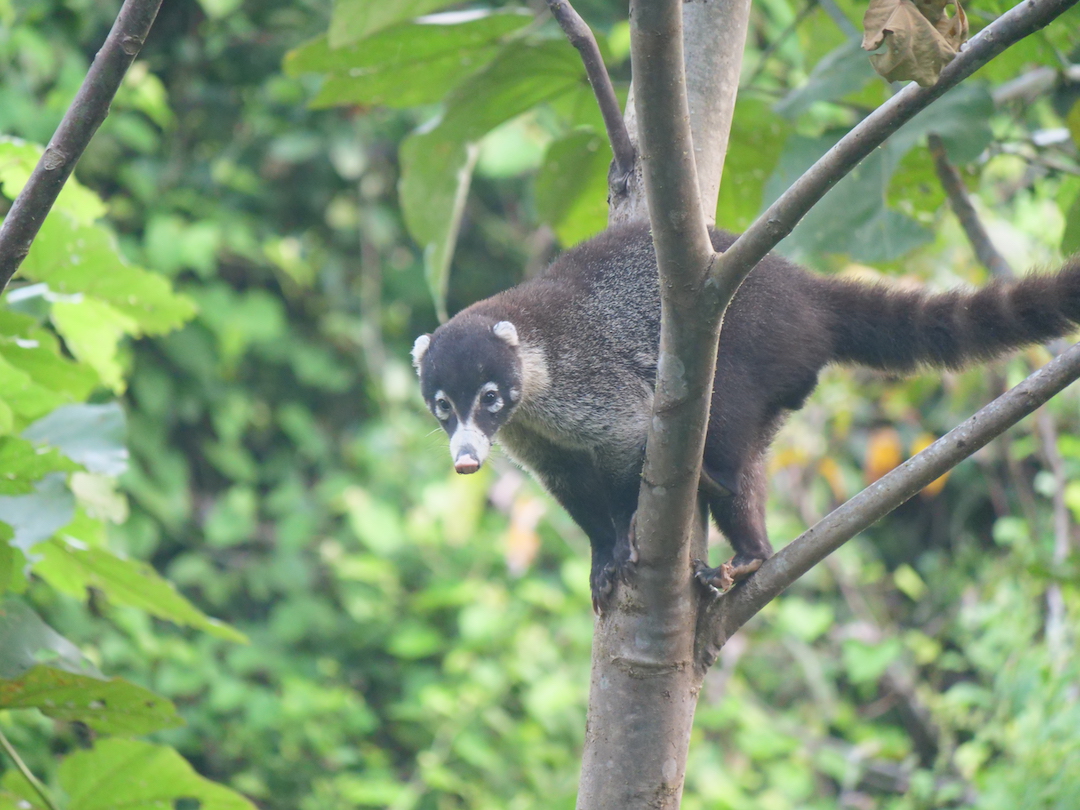
Turtles also come ashore during the night to make nests and lay their eggs on the beach. In many areas of the world turtles have had a tough go of it, due to shoreline development and vehicles driving on the beach.

However here in Corcovado the nights are pitch black and the beaches are deserted, which is exactly what the turtles need to successfully reproduce.
"El Rio" in Corcovado
The other day I made a 45 minute walk before sunrise to fish a river which empties from Corcovado into the mighty Pacific Ocean. River mouths are always excellent places to fish in Costa Rica as jacks, mackerel, roosterfish and snook often congregate around them.
However, upon arriving at the river I found it to be bone dry.
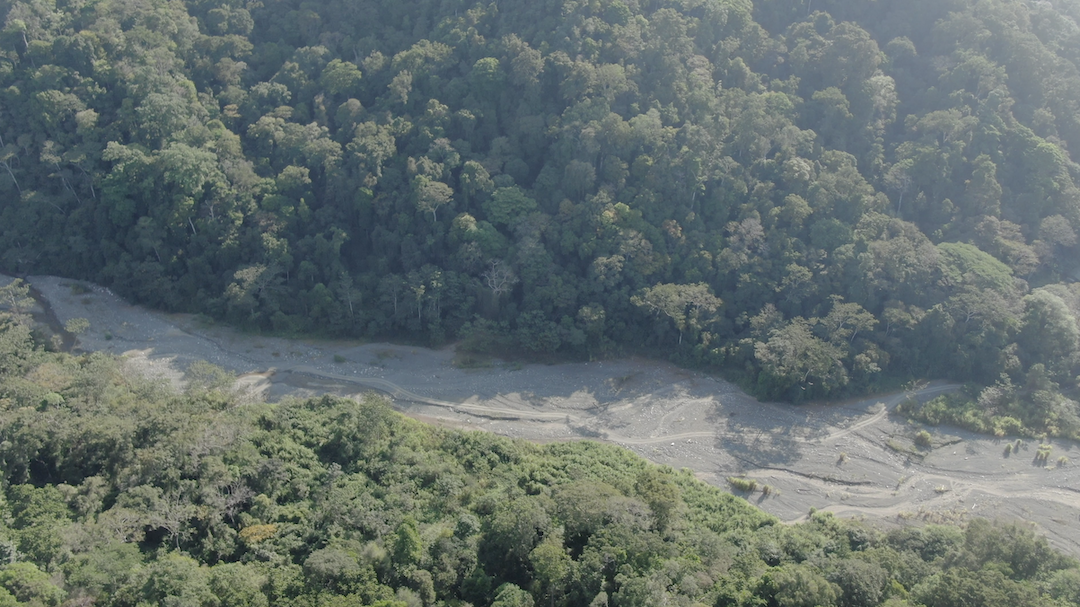
Because it is now the dry season in Costa Rica, the river had no water at all.
My plan of fishing the inlet was a bust, but I did manage to capture some spectacular drone shots of the jungle and the undeveloped coastline which stretched for miles to the north.
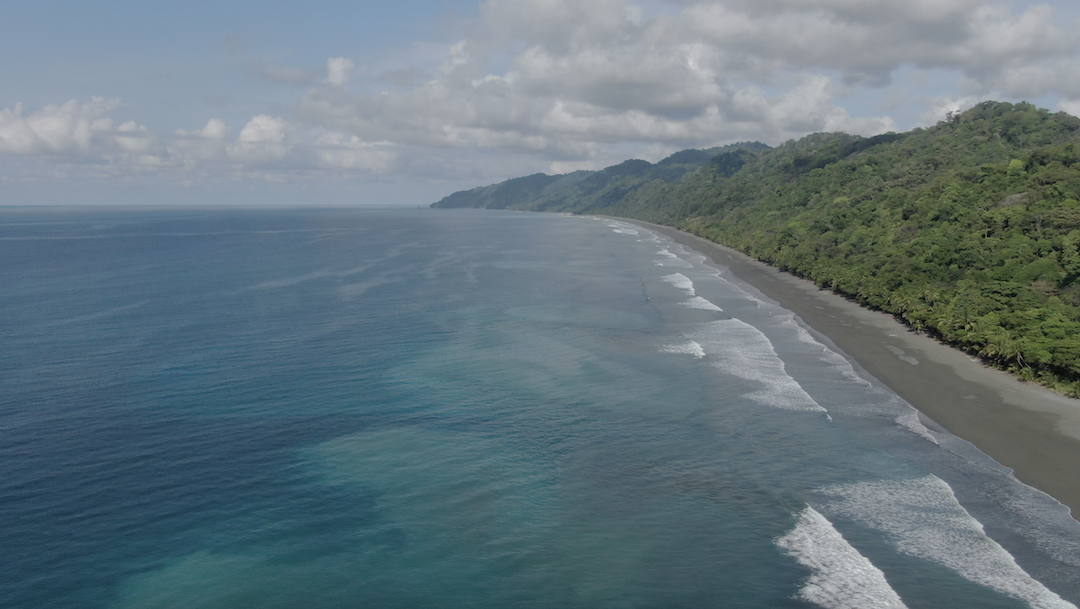
The walk back to our villa was long and hot, but along the way I met some people who I think may of been indigenous to the area. Interestingly, I have learned that one of their sources of income is panning for gold.
All in all our time spent at our accommodations at Corcovado was tremendous. The wildlife was the best we have ever seen, and the snook fishing was pretty great too. However, it was now time to make the trek south to a new destination.
Cabo Matapalo on the Golfo Dulce
On Monday of last week Lauren and I left our accommodations at Corcovado and headed to a different location on the edge of the Golfo Dulce at a place called Cabo Matapalo.
Instead of taking the usual coastline road, our taxi driver brought us through the mountains on a road that is impassable during the wet season.
The views were tremendous!

There are no stores in Cabo Matapalo so we needed to make a quick pit stop in Puerto Jimenez for supplies and groceries to last us two weeks.
Thank God for Lauren because she is very skilled at meal planning. Without her I would probably starve!
From Puerto Jimenez we traveled west down the "world's bumpiest road", or at least that's what we think. Maximum speed on sections of this road are less than 5mph due to enormous pot holes, and rivers!
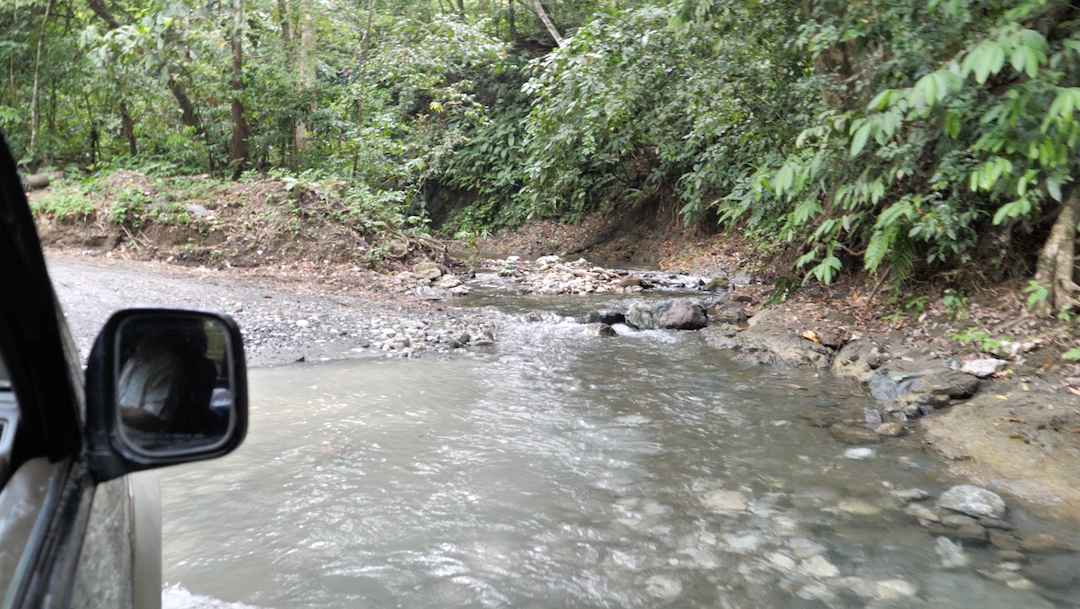
Some people might find this inconvenient, however Lauren and I enjoy dirt roads because it forces vehicles to go slow, which keeps noise down and helps maintain an easy-going pace and vibe throughout Cabo Matapalo.
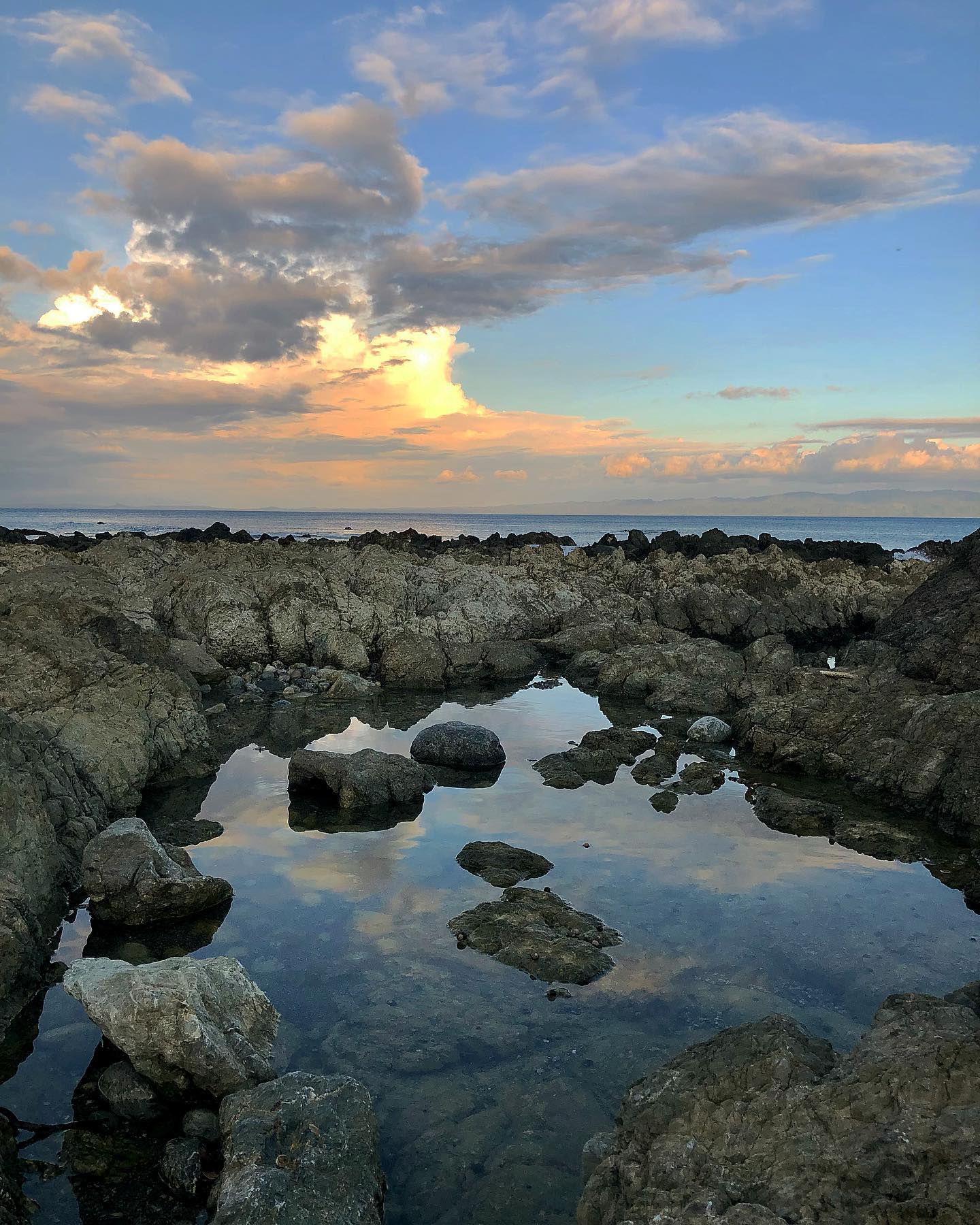
By 1PM we had arrived at our new home for the next two weeks. Due to COVID there are very few travelers here, and as a result we have the entire place to ourselves for $100/night.
The view of the gardens and the Golfo Dulce in the distance is second to none.
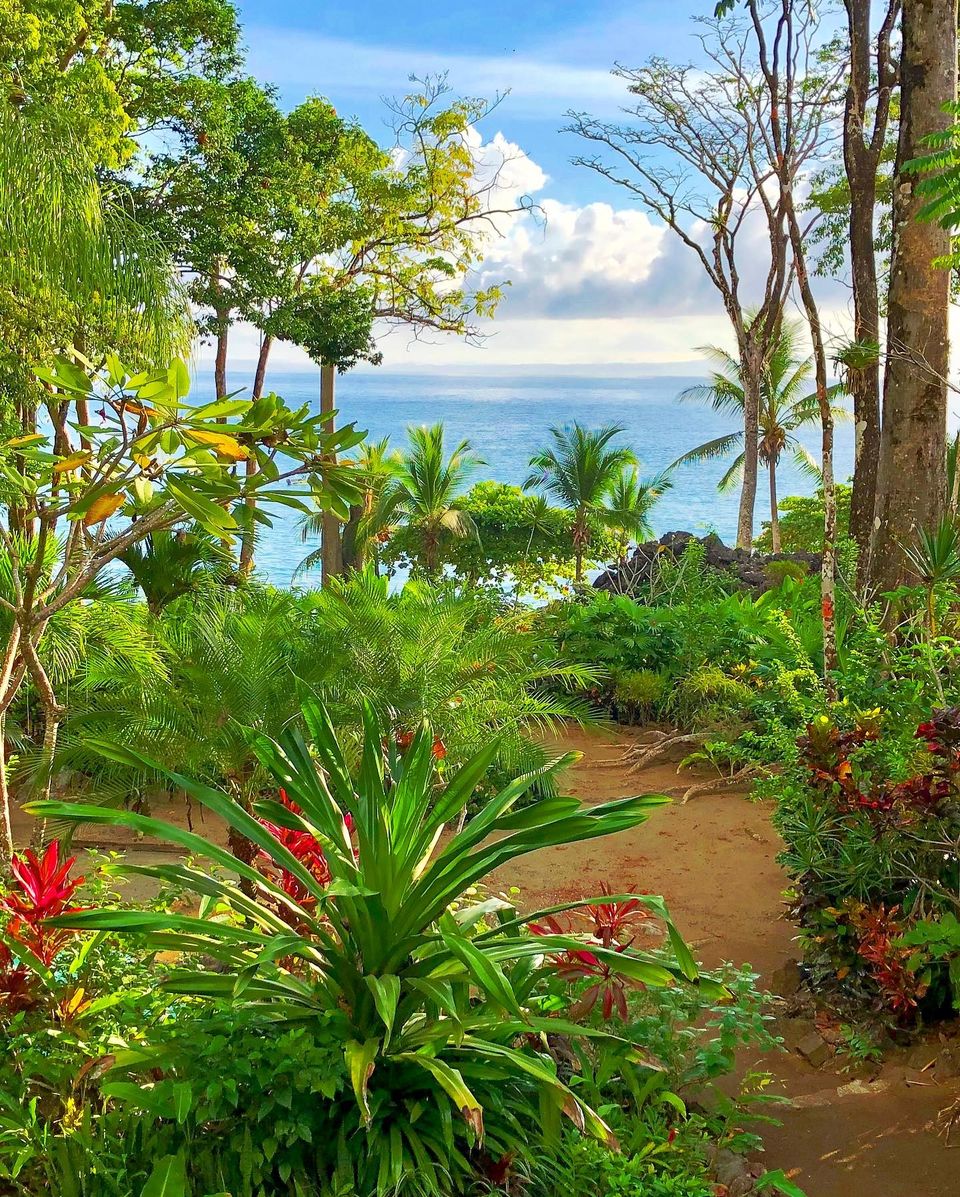
Humpback Whales in the Golfo Dulce
No more than one hour after we settled in I found myself gazing out at the ocean when I suddenly spotted a whale spout. Within an instant I grabbed my drone and headed down the cliff at the edge of the property.
I have filmed whales before off Cape Cod, however the opportunity to film a whale while having both my feet on terra firma was a brand new experience for me. The whales were only about a quarter of a mile offshore and were headed southeast into the Golfo.
From October through December humpback whales visit the Golfo Dulce with regularity, but seeing whales in the Golfo this late in January is rare and a bit odd. I got some really nice images of the whales but then was surprised by a sight I've never seen before on the drone.
From the depths of the Golfo I could see the outline a whale's body, so I moved the drone into position to capture the whale as it surfaced. To my delight there was not just one whale, but two whales - a mother and her calf.
Seeing a sight like this less than one hour after arriving at Cabo Matapalo pretty much sums up the experience of visiting this area. There is no telling what sort of wildlife you are going to see next, and there are surprises throughout each hour of every day.

Fishing For Giant Hawkfish In The Rocks
Unlike the first place where we stayed on the Osa, our current rental is located along an extremely rocky shoreline. I believe these rocks are all volcanic, and were probably formed millions of years ago when nearby volcanoes erupted.
As a result there is plenty of structure along this coast to attract a variety of species within casting range. The only issue here is that large swells rolling in from the open Pacific Ocean can make it dangerous and sometimes impossible to safely fish from shore.
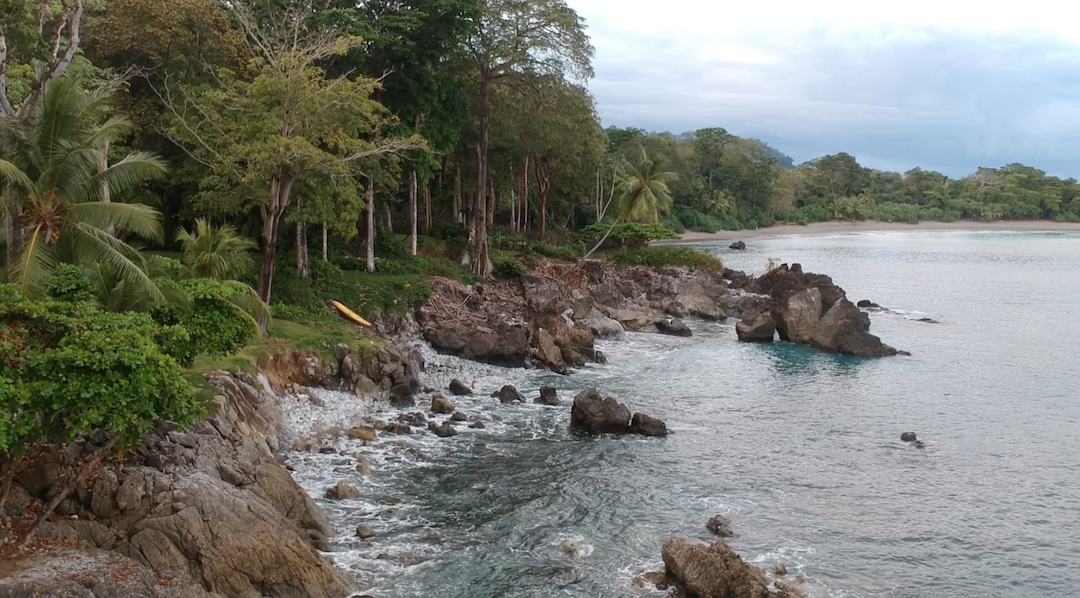
Low tide is in my opinion the safest and easiest time to fish here. After unpacking and getting settled in, I headed down to the shore to fish the first low tide of our stay.
Instead of using my big rod to cast poppers for jacks and roosters, I decided to first try my little setup in hopes of catching pargo, snappers and whatever else might be hanging out by the rocks.
Fortunately the swell was not big this day so I had no trouble at all wading out to a volcanic rock that is situated just a few yards off the beach. Once upon the rock I began casting a 1/2 ounce lead head with a small Gulp white curly tail grub.


Hi Ryan sounds like your having fun. I left the same day you guys did. Boston to fla. to San Jose. We took the last puddle jumper over to tambor that day. We just got back stayed in mal pais. It’s a surfer town took a couple small charters great fishing. Hotter than they let on. Enjoy the rest of your trip.
Sounds like a great trip Steve! I’ve never been to Mal Pais but I have heard nice things. Good to know the fishing is solid over that way. Thanks for the comment!
Hey Ryan,
I really enjoyed your blog post and always find your Costa Rica adventures captivating! I’ve never fished in a very remote location before, but after watching these videos and hearing about taking the ATV’s down dirt roads, I would love to expand my fishing to less traveled places- even in areas of the Cape. Corcovado National Park sounds like an amazing place and the drone footage is incredible- what type of drone are you using for these shots?
Looks like an awesome experience. Nice to get out of the cold weather and wet a line for some unique fish!
Ryan – I really enjoyed reading about your trip and found the links very helpful, especially to see what rods, reels, and lures you used. I am now putting Costa Rica on my list of places to visit! Thank you, Gretchen
How do you plan a trip to what seems to be a remote part of a foriegn country? It looks amazing but seems daunting.
Thank you for sharing with us about your great trip to Costa Rica. It would be interesting to hear from someone about why the mother and calf whales were still there at this time of the year when they normally move out in late December. Perhaps it was to help strengthen the calf for the trip to where ever they go. Keep those posts and pics coming. Say safe stay well. Richard
What an amazing trip! And as always, your descriptions combined with the incredible photographs make it seem like I am watching some National Geographic special! Some of the photos are so amazing that they look they cannot possibly be real.
My wife traveled to Nicaragua and Costa Rica a few years ago on a fellowship she applied for so that she could improve her spanish speaking ability as she was preparing to work with students whose first language is not english. As I shared with her your posts, she let me know that she was very willing to travel back to Costa Rica if we can ever pull it off! Keep the posts coming…it might actually help me to get there myself someday!
You mentioned that travel during Covid has been difficult/challenging and I assume it has limited the numbers of visitors. Have the locals been able to get resources to manage? How have they done with vaccinations?
Stay safe and enjoy the adventures!
What an awesome experience you’re having. Maybe I’ll get down there one of these winters.
Just wondering what the weather and water temperatures are like there this time of year.
I’m in Fort Myers and the snook and tarpon aren’t very active in the 63 degree waters. Sea trout are the fish to catch around here in the mangrove estuaries.
Good luck fishing on the reminder of your trip. Go get that rooster fish!
Most days are pretty similar, and begin with dead calm conditions and no wind. Once 7AM rolls around the sun is out and it starts to get hot. By 10 or 11 a light sea breeze begins to develop, and by 3PM the wind is normally blowing pretty well. 90 degrees is pretty typical for where we are right now, but the temperature can change a lot depending on where you are. I have not measured the water temperature but I would estimate it is probably around 85 degrees. And with regards to the roosterfish, I lost one 48hrs ago while casting poppers from shore. It was heartbreaking, but maybe I’ll get another chance.
Costa Rica is such a beautiful country. The micro climates blow my mind, I traveled there with my girlfriend for two weeks. We went in March of 2021, I had reached out to Ryan and his wife before the trip. They gave me great advice on travelers health insurance and other suggestions on packing and planning. He has a great YouTube video on packing fishing equipment. One major thing I took away from it was packing a small first aid kit just in case. I typically always overlook this small but crucial piece of equipment. It came in extremely helpful for small blisters from hiking to bigger boo boo’s like getting stung by a ray on the top of my foot while wading in the ocean. We both really enjoyed the Coati’s!! Cool/friendly little guy’s. I really like the picture of the Scarlet Macaws!! I saw a few fly by us while driving and couldn’t believe my eyes!! There’s so many different species of wildlife and plants and fish!! I strongly recommend people to go down there if they can. I enjoyed reading all of your blogs but this one really brought me back! The one question I have for you is how can you tell it was a pacific black snook? With so many different types of snook so similar looking. Is it the location of where you were fishing? Brackish water? Or the dorsal fin that helped you to identify it? Thanx for another great read!
Teddy, you are definitely correct about all the different micro-climates! Just a few miles can mean a difference of 10 degrees or more in temperature. There have also been many times when we’ve watched a rainstorm on the other side of the bay, while we remain out of the rain and in the sun. It’s all very interesting. Getting stung by a ray is no joke, and yes the coatis, scarlett macaws, and other critters are all pretty awesome creatures.
And regarding the Pacific Black Snook, that is just my assumption. Perhaps I should look more into this? I was not aware that there are more than one species in this area. I would definitely be open to more info about this if you know. Thanks Teddy!
Hey Ryan,
what an amazing trip. I love the videos, pictures, and storylines and definitely will put this on my bucket list… right off the bat, the snook fish looks like a great fish to hook and land but with some difficulty because they jump so high out of the water.
Thanks for sharing,
Joe
I’m glad you’re enjoying the posts Joe! Thanks for the comment. You are correct about the snook being difficult to land due to their leaping ability. However, that is fine by me because it makes it excited watching them go airborne like that. I hope all is well and keep in touch!
Unbelievable pictures Ryan. A brother of mine spent three days down there a few years ago and I’m trying to build interest in the fam to do the same (I’ve got one on board – three to go). It’s interesting that the river in your pictures was bone dry. Same situation in other years when you visited previously?
Roger that Tim! I hope you’re able to get more family members onboard with the idea. Keep me posted! With regards to the river, this was the first time I ever visited this particular river. Other rivers are flowing, but certain rivers (such as this one) dry up during this time of the year. We often see other smaller river beds which are bone dry right now, but will be flowing big time during the wet season.
Hey Tim, congrats! You won the giveaway for the $50 gift certificate to TheMightyFish.com!
Wow … what a great adventure. Can you possibly put together a blog post on how to plan for a trip like this, and what it’s like traveling internationally during the pandemic? I am hoping to get to Costa Rica at some point … thanks
Traveling internationally right now has its challenges, like having to schedule a COVID test and testing negative within 24hrs of our flight home. There is also an app on our phone that the airline provides which tells us all the stuff we need to do and fill out before being able to fly.
With regards to planning for a trip like this, a few years ago I put together this blog post which might be helpful. I will admit I went a little overkill on the gear I packed, as you can get by without packing a lot of the stuff I mention in this blog post. https://myfishingcapecod.com/costa-rica-packing-list/
Hi Ryan! I was just down in puerto Jimenez two weeks ago. We caught mahi, cubera snapper, rock snapper, barracuda and blue trevally all in front of Matapalo rocks from the kayaks. Trolling yo zuri’s or dragging live sandines we sabiki’d up was the ticket. If you can get back to puerto Jimenez, there are tons of big jacks out in front of crocodile bay on the bait schools there. Rooster fish have pulled disappearing act as of late around the osa
That’s awesome Brian! Sounds like you had an amazing trip! Catching all those species from the kayak must of been wild. I have mostly been casting poppers from shore but maybe I will take the kayak out tomorrow. Thanks for the information and I hope all is well!
Very cool Blog and experience! Do you find that you can use many of the same tactics and gear for fishing Costa Rica as you do for our New England fishery? Is there a hierarchy of fish there that people fish for similar to ours? For example, are Rooster fish like fighting a big bass or more like fighting a small tuna and are flag Cabrilla like fighting BSB?
Yes! Many of the same tactics work. From shore I have the best success casting poppers, and in general I would say a faster retrieve than what we are accustomed to using for stripers, works better.
Most local anglers keep what they catch for food, and they target what their gear can handle. For example, a lot of local anglers are using rods and reels we would use for freshwater fishing, and many are using hand-lines. They seem more interested in catching snook and other smaller fish that their gear can handle, and that they can eat.
The roosterfish and tunas are more sought after by the sport fishing community and the fishing lodges. Interestingly I don’t see any of these folks surfcasting, as they mostly target roosterfish and the other bigger, more powerful fish, from boats.
Fighting a roosterfish is a blend of what it’s like to fight a striper and a tuna. Combine the two and you have a roosterfish fight, with the exception that tuna are capable of fighting for much longer than roosterfish, which will tire much more quickly. Roosterfish will also leap into the air on occasion.
All in all I would say the milkfish that I caught the other day was probably the hardest fighting fish of them all, which I was very surprised by!
FYI-I’m learning that the flag cabrilla I thought I caught, is actually more than likely a giant hawkfish. I will have to make that edit to the post.
Amazing article! I’ve always wanted to travel somewhere exotic and experience the different fisheries this planet has to offer. Also there has been a few times up in cape Ann that some whales has gotten really close to shore. In fact just last summer there was a minky whale that washed up in Gloucester. Wasn’t the most pleasant smell but I believe members of NOAA took the skeleton for research purposes.
I’ve heard the tuna can come pretty close to shore in the Cape Ann area as well! Pretty awesome spot up there for sure. Let me know if you ever decide to make a trip to Costa Rica. It is definitely exciting not knowing what type of species might bite next. Thanks Josh for the comment!
What a great adventure for the both of you. You married the adventurous type. Enjoy
I would not be doing this without her!
So cool to get a glimpse of your trip! Can’t wait to hear more about that mystery fish. If it is a milkfish, I read that they mostly eat algae, but people still target them and they fight hard!
Yes I believe it is called a milkfish. I saw several more today but could not get them to bite. As you mention they like to eat algae and some very small crustaceans, so they are incredibly picky! I am starting to think I was super lucky to hook that one. And you are correct about them fighting hard. It was an insane fight! They are probably the strongest fish I’ve ever hooked.
That’s a bucket list fishing trip for me. Thanks for “including” us in your trip.
Let me know if you ever decide to make the trek down here Larry. Happy to share tips!
Ryan,
What a nice way to start my Wednesday! It’s amazing to see all that you and Lauren have seen and done in such a short time. I am curious to learn how you are able to access the internet and fly your drone in such remote areas? The colors and variety of plants and fish is incredible. Thanks so much for sharing your experience.
Hey Ron,
The internet is spotty, but compared to when we first came down here 6 years ago, the internet coverage has improved dramatically. For electricity our cabina has solar power, which is enough for us to charge our devices (including drone batteries) one at a time.
I’m glad you’re enjoying the Costa Rica posts. LMK if you have any other questions, and stay warm back home!